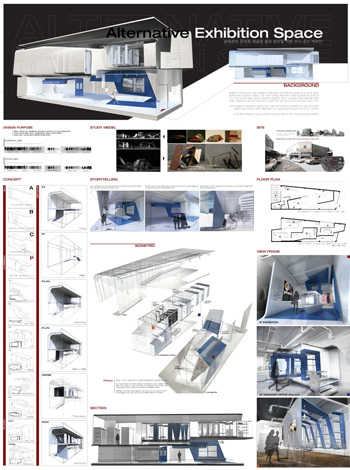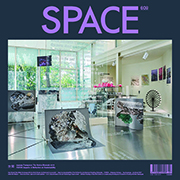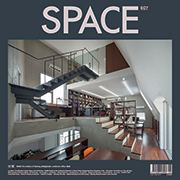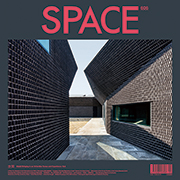11' the 2011 th space prize for international students of interior design
- re-livening -
SUBJECT
re-livening
The 11th Space Prize for international Students of Interior Design, Space Grand Prize 2011, held under the theme of ‘Re-livening,’ had the first open judgment on Oct. 26; the winners were subsequently selected and announced. Paiksun Kim (president of Paik-Sun Design) and Seunghyun Woo (professor at the School of Architecture, Hongik University) were the co-judges for the contest. The subject of the contest was ‘Proposal for Public Space on the Street of Mullae Art Village,’ and its objective was to realize an autonomous cultural ecosystem. The participants were given a common project: Remodeling of some areas among designated sites within the Mullae Art Village. Mullae-dong used to be a representative manufacturing area in Seoul, but as many industrial complexes had to be relocated to the outskirts of Seoul due to the effects of the financial crisis or urban development projects, real estate development turned the area into a run-down community with a unique identity, where ironworks and the workrooms of young artists can freely coexist.
The judging standard evaluated the creativity displayed by the contestants in reflecting respect and consideration for people who live an independent and creative life in a poor environment while cherishing the vestiges of the eventful past. From among a total of 59 contestants, nine teams were selected at the 1st judgment, while the 2nd open judgment selected one Grand Prize team, one Best Prize team, one Special Prize team, and two Selected Works teams.
“I am sure they worked hard to solve this not-so-easy to solve problem, but I cannot see artists in their works,” said Mr. Paik-sun Kim during the open judgment. “They must understand the life and actions of the artists in the Mullae Art Village,” Kim added. Prof. Seung-Hyun Woo said in his final comment that “the students led the abstract subject to an emotional and practical space.” Regarding the prize-winning works, Professor Woo said, “The students presented fresh ideas based on careful observations of the given sites and the people living there. I hope that the students have gained a great deal of understanding about the place while trying to create a space fit for the place in the process of carrying out the project.”
The winners of the 11th Space Prize for International Students of Interior Design attended the awards ceremony on Nov. 9, and their works were on display until Nov. 15 at the SPACE Theater in the Space Group Building, and will be on display online on the Space Grand Prize homepage.
JURY REPORT
Seunghyun Woo
Professor at School of Architecture,
Hongik University
The theme of the Space Prize for International Students of Interior Design was the「re-livening」of the Mullae art village that iron works of ironmasters and studios of young artists co-exist. The judges carefully selected award-winning projects that creatively reflected the respect and care for people who independently live in a retro environment where the trace of history with the ups-and-downs still remains. I would like to express my sincere appreciation to the students who put their effort and innocent passion to produce the high quality works even though the given theme was a difficult subject to work with. Also, kudos to the students that turned abstract theme into sensible and practical space, and to those that did excellent job at expressing creative ideas. I truly enjoyed the evaluation time imagining and anticipating better future of Munllae art village.
The grand prizewinner unanimously received the highest marks from judges because of the originality of idea that shows scrupulous observation of the given site and people in Mullae arts village. The winner proposed a ‘library’ that seems unlikely fits the environment surrounded by noise from ironworks, and turned it into a customized public space of Munllae art village. The noise from outside is gradually filtered and eventually blocked while a visitor walks through a long and narrow corridor. The winner interpreted the trace of time found on the exterior walls of old buildings as an architectural motif, and applied it to the interior wall of the library. It was a creative and sustainable move that the designer re-used iron scraps from ironworks to fill the cavity of library wall. Last but not least, the mock-up test to explore the actual material is a valuable process that even established architects should model.
Subject Description
re-livening
Mullae-dong, which means a place where Ikjeom Mun introduced cotton, was one of the representative industrial complexes since Kyungsung Spinning Co., was established in the area in 1919. The Yeongdeungpo region accounted for 80% of output of Seoul city in the early 1940s, as the area was the home to numerous factories and small steel manufacturers. In this respect, the industrial area was the place full of energy, dynamics of manufacturing and joys and sorrows of laborers.
However, the area turned into a slum as many industrial complexes in the region were relocated to the suburban outskirt areas due to the foreign exchange crisis and an urban development project.
Currently, Mullaedong area promotes a project aimed at activating the local community in collaboration with artists and writers residing in the Munllae Art Complex. Starting from the “Mullae Art Festival” in 2007, several socio-cultural events including “2010 Mullae Art Factory Festival MEET” have been held, in accordance with the Seoul City’s urban renewal project in April, 2008. In this regard, the Mullaedong Culture & Art Complex Street is under transformation as a cultural street through the self-sustainable community.
We wish the emergence of the spontaneous cultural ecosystem fueled by ideas and creativity based on the independent identity, beyond the administrative achievement of the exhibitions and events. It could be not just our dream, but desire of many people. Through this project, we hope to see many design perceptions and logical approach of the participants who dream about the ideal “indigenous cultural ecosystem.”
Theme: Proposal for Public Space on the Street of Mullae art village
Subject: Interior Architectural Approach to Embody Indigenous Cultural Ecology
Project: Remodeling of Some Areas Among Designated Sites within Mullae Art Village
GRAND PRIZE
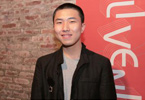
Song Seung-Yeop
Hongik University
Recycled in Munlae
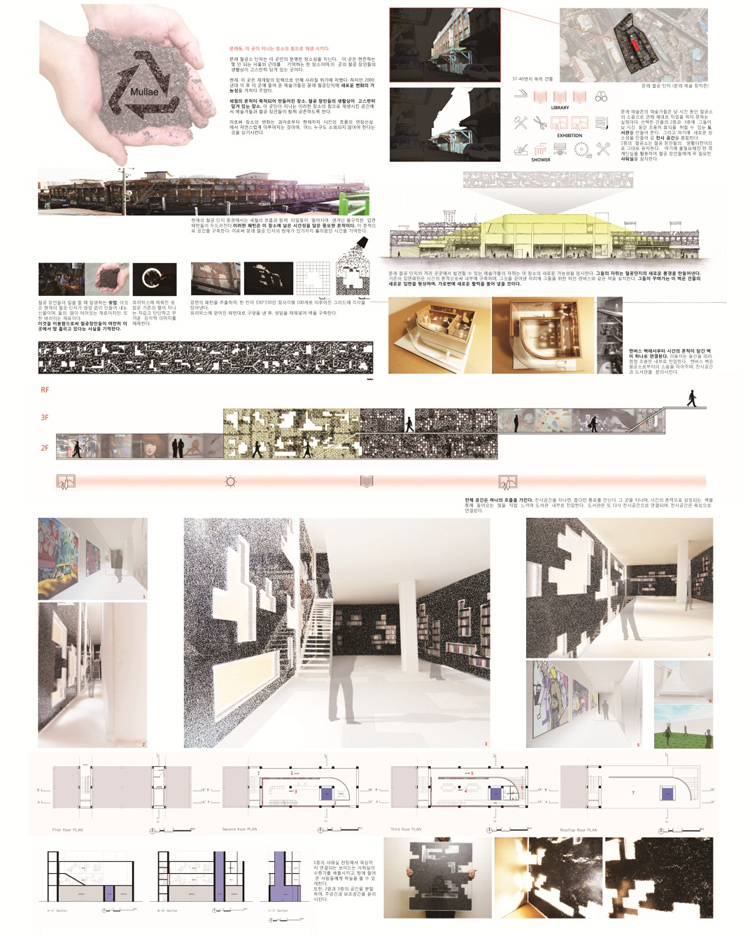 Munrae-dong, revived with the inherent power of the place. The Munrae ironworks complex has its own unique sense of place. It is one of the few remaining locations that still holds the memory of modern Seoul, and contains the story of the lives of ironworkers. Currently, the area is in danger of extinction due to pressures for redevelopment. Artists who have come here since 2000, however, brought new possibilities into the complex. It is now a place of time-honored traces, and a place that holds the story of lives of ironworkers. In the space that has been regenerated with the place’s unique ability, artists and ironmasters are allowed to co-exist. Through this, the change of the place occurs naturally with the passage of time, from past to present, acting as a reminder that no one should be alienated.
Munrae-dong, revived with the inherent power of the place. The Munrae ironworks complex has its own unique sense of place. It is one of the few remaining locations that still holds the memory of modern Seoul, and contains the story of the lives of ironworkers. Currently, the area is in danger of extinction due to pressures for redevelopment. Artists who have come here since 2000, however, brought new possibilities into the complex. It is now a place of time-honored traces, and a place that holds the story of lives of ironworkers. In the space that has been regenerated with the place’s unique ability, artists and ironmasters are allowed to co-exist. Through this, the change of the place occurs naturally with the passage of time, from past to present, acting as a reminder that no one should be alienated.
PRIZE OF EXCELLENCE
No Best Prize
SPECIAL PRIZE
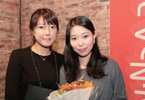
Hyeseung Lee + Wongyung Jang
Hongik University graduate school
Coexistence
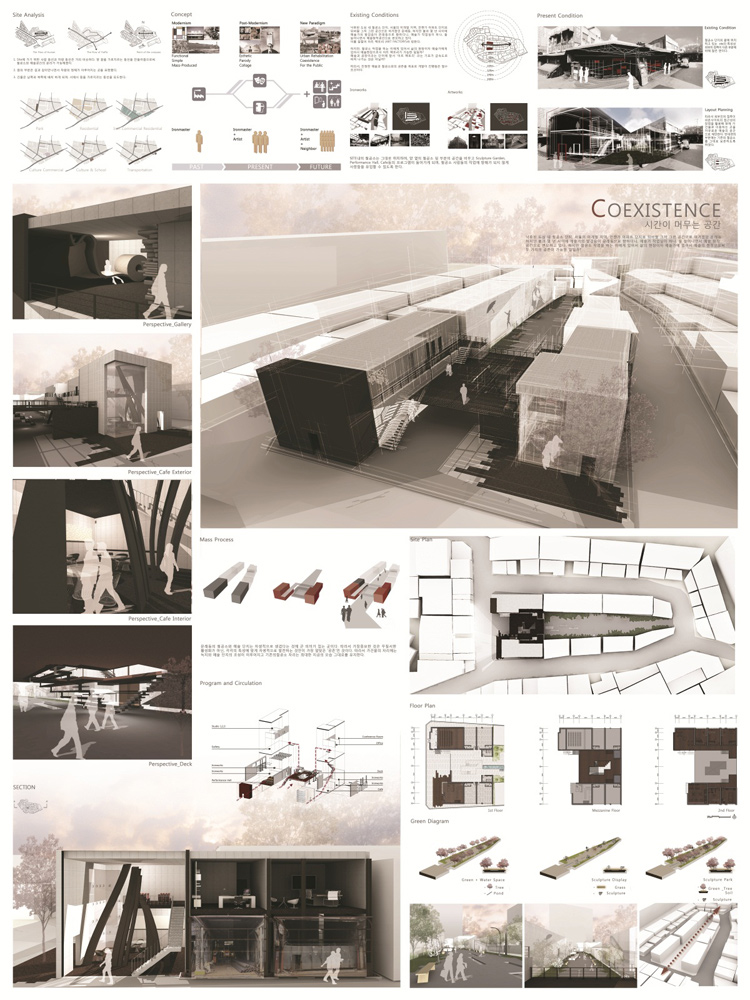 Ironworks in undeserved urban development, undeveloped areas of Seoul, Mullae-Dong used to be just such a place where would be changed into an apartment complex. However, just in a few years, the artists started to move in and the number of studios have increased one by one, therefore this space changed into art creation space by artists' inflow. Is there any way to provide better environments to both ironmasters and artists? Is it possible to coexist a disparate group of individuals and spaces without destroying their own life styles?
Ironworks in undeserved urban development, undeveloped areas of Seoul, Mullae-Dong used to be just such a place where would be changed into an apartment complex. However, just in a few years, the artists started to move in and the number of studios have increased one by one, therefore this space changed into art creation space by artists' inflow. Is there any way to provide better environments to both ironmasters and artists? Is it possible to coexist a disparate group of individuals and spaces without destroying their own life styles?
Mullae dong is a significant area where is created spontaneously as an art creation space by artists' inflow. This area has an unique atmosphere. Thus, the most important design idea of this space is 'Coexistence' of spontaneous development, not a chaotic activation like any other places, such as Hongdae, and Samcheong dong. Therefore we tried best to keep the existing conditions as much as we can.
The building site is placed at the end of ironworks developments, so it is easy to access from the main road. The sculpture garden will be placed in the middle of two main buildings along axis. In the main buildings, there will be ironworks and artists' studios, and several facilities will be added, such as performance hall, cafe, office, conference room, and gallery. The focal material of these buildings will be iron which we can often see in this site, and we also used some natural materials, such as stone and wood, and we designed the garden with sculptures.
HONORABLE MENTION
.jpg)
Sungjin Han
Hongik University
Special Prize: Empty
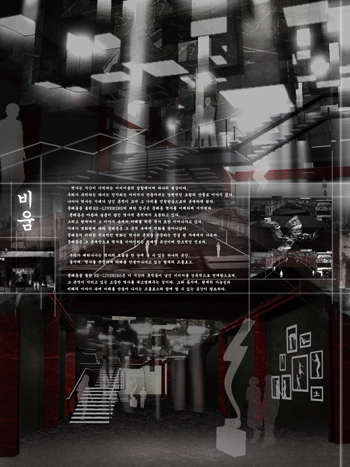
.jpg)
Insung Son + Hyunoh Kim + Myoungjin Park
Sejong University
Line That Connects Us
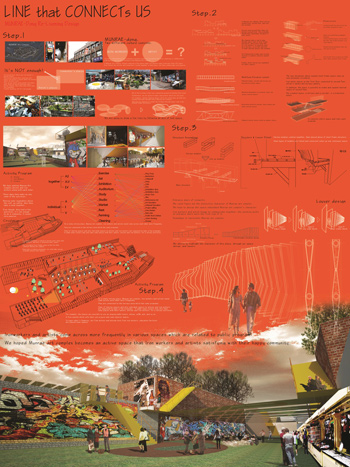
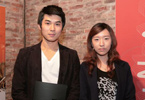
Hyosang Park + Nayoun Yang + Euijeong Ma
Konkuk University
Alternative Exhibition Space
